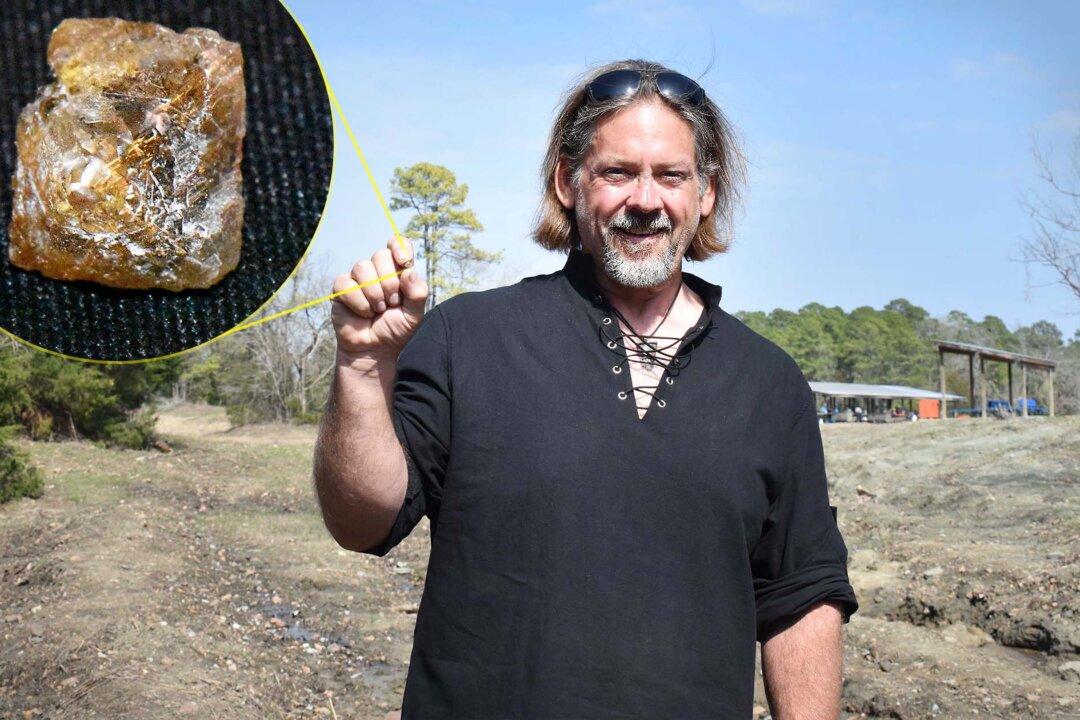A seasoned gem hunter has unearthed a 3.29-carat diamond at an Arkansas state park, the stone being the largest found at the site since September 2021.
David Anderson of Murfreesboro, Arkansas, a regular visitor of his hometown’s Crater of Diamonds State Park, was wet-sifting soil at the park on March 4 when he noticed something sparkling in the gravel. Anderson had concentrated his search on the west drain of the site’s 37.5-acre plot.





